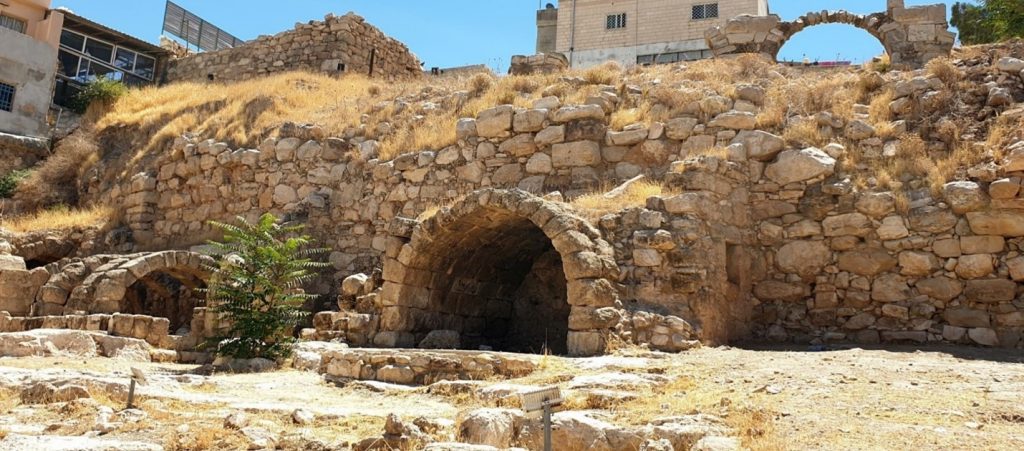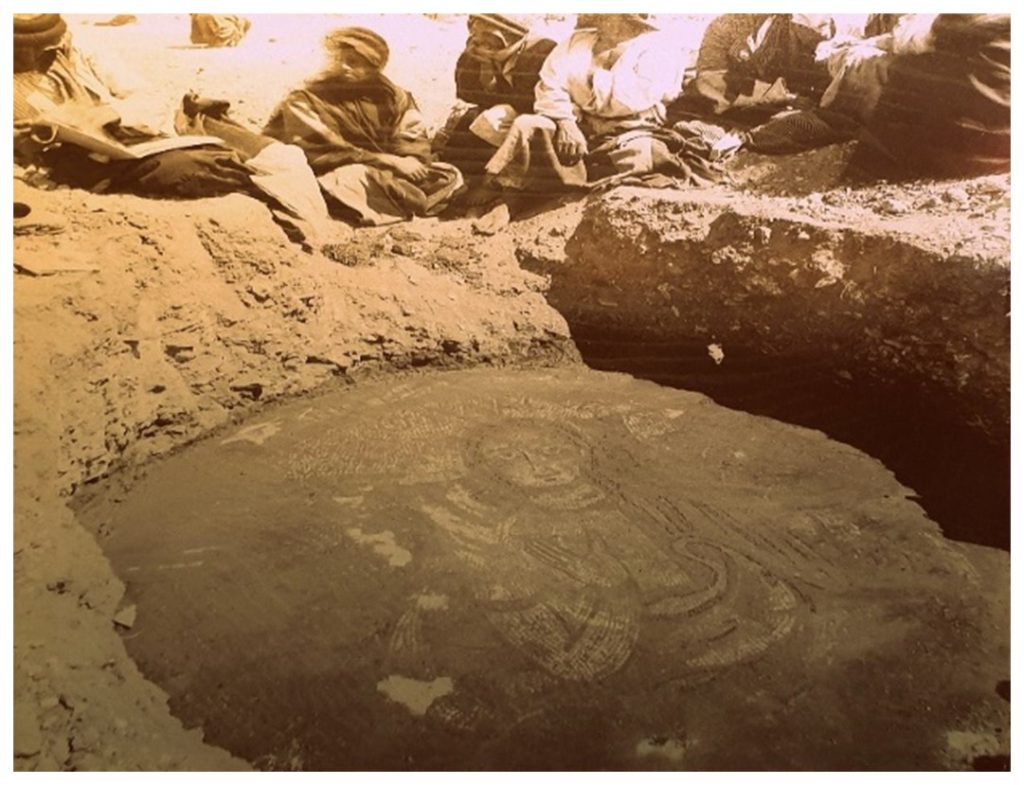Madaba – City of Mosaics
Madaba, one of the oldest cities in Jordan, has a long and eventful history. The city was of great importance in biblical times and reached its peak under Roman and Byzantine rule. Particularly in the 6th century, Madaba was a significant religious center, as reflected in its impressive mosaics, such as the world-famous Madaba Mosaic Map. However, in 749 AD, the city was severely damaged by a devastating earthquake, leading to a dramatic decline in Madaba’s significance. Many of its monumental buildings and mosaics were heavily damaged during this event.

The city remained largely abandoned for centuries until the re-settlement by Christian families from Kerak in the 19th century, which breathed new life into Madaba. These families, attracted mainly by the religious traditions and history of the region, contributed to the city’s revival. As a result, people began restoring the historical ruins, and Madaba developed into a center for mosaic art. Today, the city is not only a cultural heritage site but also a vibrant place that preserves its history while embracing modern developments.

(Foto of an original photo displayed in the Church of St. John the Baptist in Madaba)
Located just 30 kilometers southwest of Amman, the city attracts visitors from all over the world who wish to discover its unique artworks and rich history.
The Madaba Mosaic Map
The most famous mosaic and the most significant landmark of the city is the Madaba Mosaic Map, located in the Greek Orthodox Church of St. George. This unique map, created in the 6th century, is the oldest surviving representation of the Holy Land. It depicts in great detail biblical locations, including Jerusalem with the Church of the Holy Sepulchre, the Dead Sea, the Jordan River, and numerous cities and villages in the region. The mosaic map was originally over 15 meters long, but only about 5 meters of it have been preserved today. Nevertheless, it is considered one of the most important historical documents for studying the geography of the ancient Near East.

The Church of the Apostles
Another impressive mosaic can be found in the Church of the Apostles. This Byzantine church, dating back to 578 AD, houses a colorful floor mosaic depicting the personification of the sea, surrounded by fish, birds, and various animals. The intricate design and fine details make this mosaic one of the most beautiful in Madaba.

In Madaba, there are many more mosaics, including those in the Martyrius Church (Burnt Palace), the Cathedral Church, and the Archaeological Museum. These mosaics feature intricate depictions of animals, plants, and religious symbols, reflecting the city’s significant role during the Byzantine era. They serve as a testament to the rich artistic and cultural heritage of Madaba, providing insight into the religious and everyday life of the time.

The Archaeological Park I in Madaba is a treasure trove of Roman-Byzantine mosaics. Among its exhibits is the oldest mosaic fragment discovered in Jordan, displayed at the entrance alongside a fascinating collection of regional mosaics. Visitors can admire the exquisite floor of the Hippolytus Hall, a rare depiction of an ancient myth in mosaic form, showcasing the intricate artistry and storytelling of the time.

The Church of the Virgin Mary, which was discovered only in 1887, also features impressive mosaics depicting biblical scenes, geometric patterns, and floral motifs. Particularly noteworthy is the inscription in Greek, which provides details about the church’s construction and its subsequent renovations. These mosaics, along with the inscription, offer valuable insight into the religious and artistic heritage of the region.

On the other side of the still-preserved Roman street, you will discover the stunning mosaics of the Crypt of St. Elian, as well as the famous Tree of Madaba. The mosaics in the crypt depict religious themes and illustrate the artistic mastery of the time. The Tree of Madaba, a symbolic mosaic, is a remarkable piece that beautifully integrates nature into its design, making it one of the most recognized mosaics in the region. These works further enrich the historical and cultural significance of Madaba, showcasing its vibrant Byzantine heritage.

In the Madaba Mosaic School, supported by the Jordanian government and international organizations, artists learn the ancient technique of mosaic-making. Visitors have the opportunity to experience this craftsmanship firsthand and even create their own mosaic pieces. The school plays a vital role in preserving this ancient art form, passing it down to future generations, and keeping the rich mosaic heritage of Madaba alive. It also offers a unique cultural experience for those interested in learning about and participating in this traditional craft.
